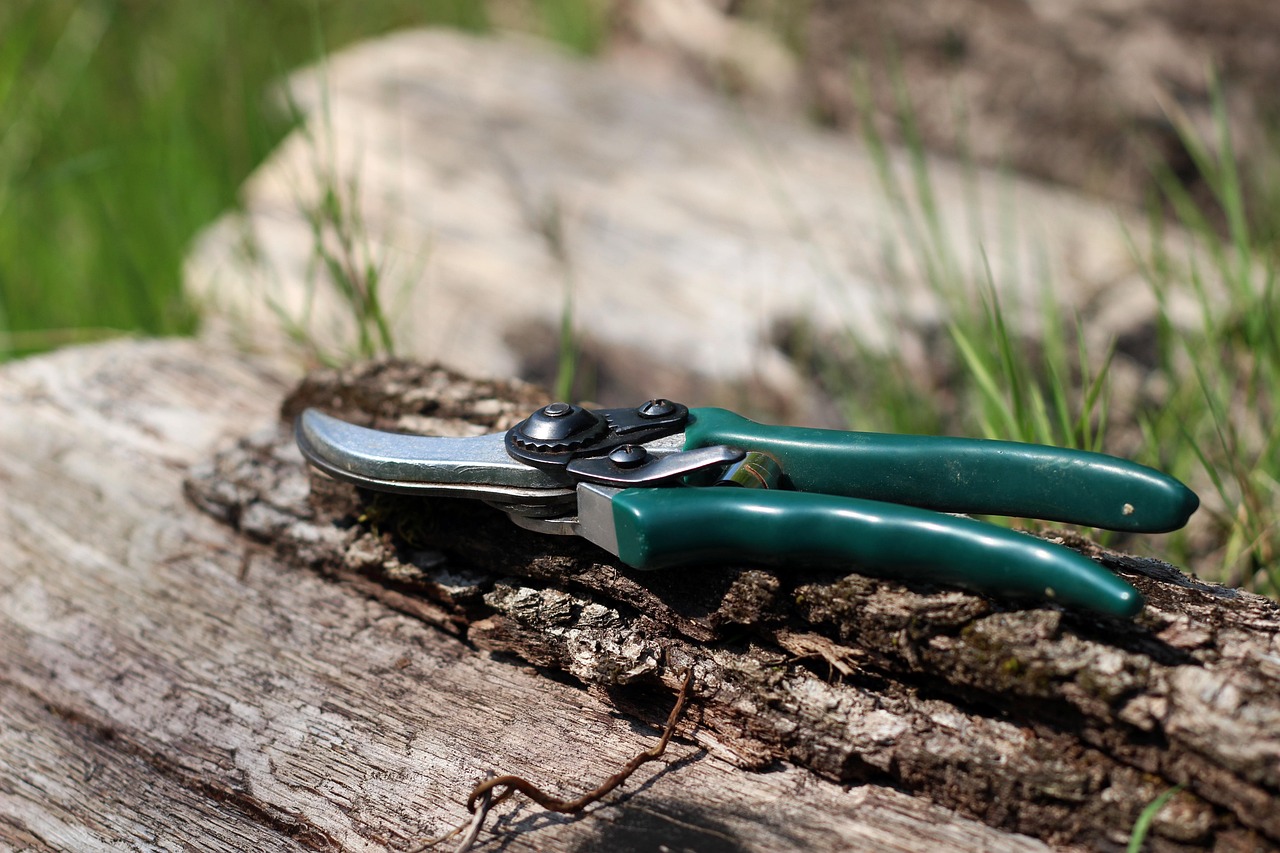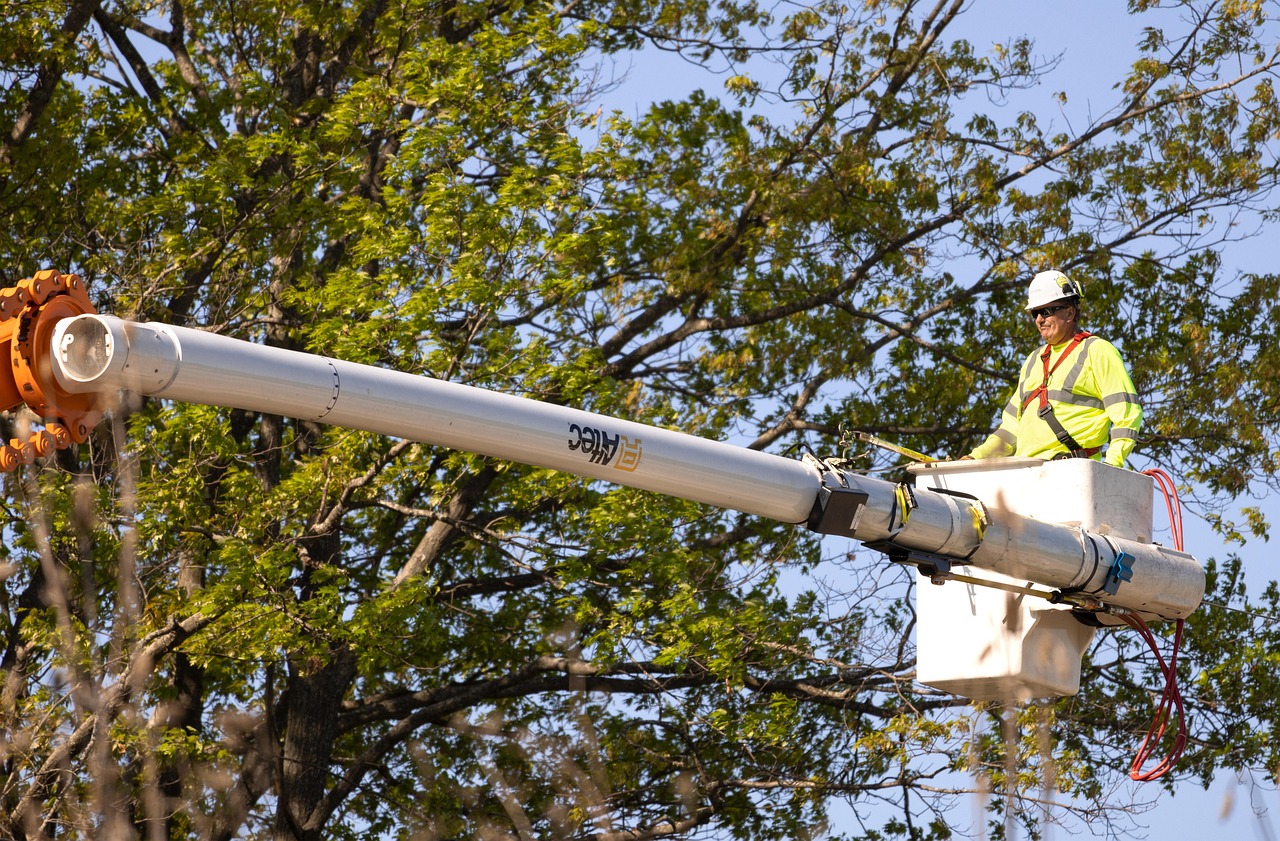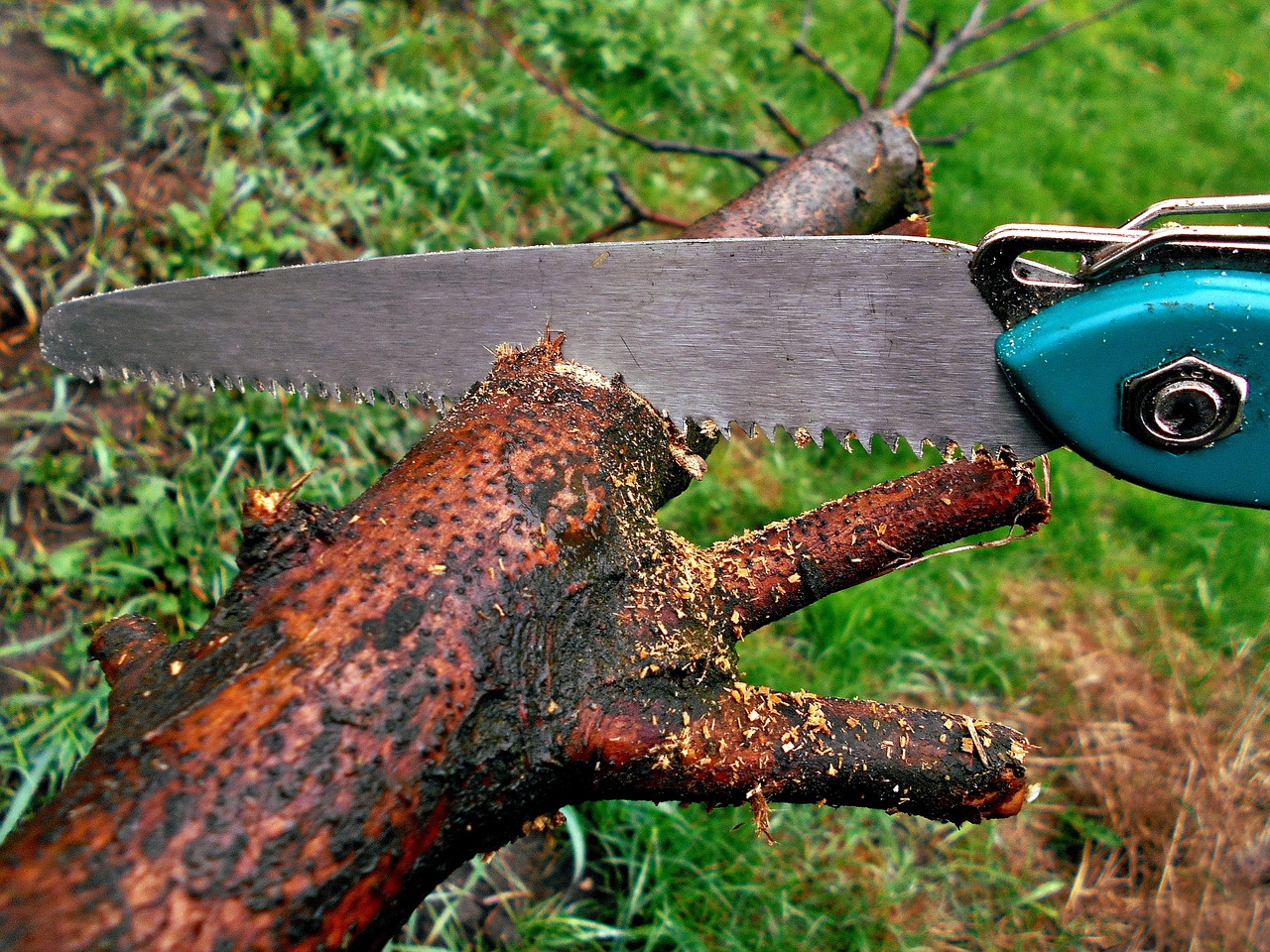Many gardeners believe various myths about pruning flowering trees that can lead to improper techniques. Common misconceptions include the idea that pruning always leads to more blooms or that certain trees should never be pruned. Understanding these myths is crucial for maintaining healthy trees.
Pruning is an essential practice for maintaining the health and aesthetics of flowering trees. However, it is often surrounded by misconceptions that can hinder proper care. Flowering trees, known for their stunning blooms, require specific attention when it comes to pruning. The right techniques can enhance their growth and flowering potential. Conversely, following myths can lead to poor growth and reduced flowering.

Flowering trees such as cherry, dogwood, and magnolia are popular choices in gardens and landscapes. These trees add beauty and charm to any environment. However, many gardeners are unsure about how and when to prune them. This uncertainty often stems from the prevalence of myths surrounding pruning practices.
Common Myths About Pruning Flowering Trees
Understanding the common myths can help gardeners make informed decisions about pruning practices. Below are some widely held beliefs about pruning flowering trees, along with the truths that debunk them:
- Myth 1: Pruning always leads to more flowers.
- Myth 2: All flowering trees should be pruned in winter.
- Myth 3: The more you prune, the better the tree will grow.
- Myth 4: You can prune anytime without any consequences.
Each of these myths has a grain of truth but is often misunderstood or misapplied. For instance, while some pruning can encourage blooming, excessive or incorrect pruning may stress the tree, leading to fewer flowers.

It is helpful to understand the biology of flowering trees to grasp why these myths exist. Flowering trees have specific growth cycles and blooming periods. Pruning at the wrong time can disrupt these cycles. The best time to prune flowering trees varies based on species. For example, some trees bloom on old wood, while others bloom on new growth.
| Tree Type | Best Time to Prune | Blooming Type |
|---|---|---|
| Cherry | Late spring or early summer | Old wood |
| Dogwood | After blooming | Old wood |
| Magnolia | Late winter or early spring | New growth |
This table illustrates the importance of timing when pruning different types of flowering trees. Each tree has its unique needs and requirements, making it crucial for gardeners to educate themselves on proper techniques.
Another common myth is that all pruning is beneficial. While pruning can promote growth and flowering in some cases, over-pruning can lead to damage. Removing too many branches can weaken a tree, making it more susceptible to diseases and pests. Therefore, less is often more when it comes to pruning flowering trees.

Additionally, many people believe that any cut made on a tree is acceptable at any time. This assumption can lead to significant problems. Some trees are sensitive to when they are pruned. For example, spring-blooming trees should be pruned right after they flower to allow for new growth in the upcoming season.
The belief that pruning creates a healthier tree is also misleading. While judicious pruning can remove dead or diseased branches, excessive cutting can harm a tree’s overall structure and vitality. Understanding the proper techniques is essential for effective pruning.
Education is key in dispelling these myths. Gardeners should seek reliable resources and expert advice before deciding how to prune their flowering trees. By doing so, they can ensure that their trees thrive and produce beautiful blooms year after year.

In summary, understanding the facts behind pruning flowering trees helps gardeners avoid common pitfalls associated with these myths. Proper education on timing, techniques, and tree-specific needs will lead to healthier trees and vibrant blooms in your garden.
Understanding the Benefits of Proper Pruning
While myths about pruning flowering trees can be misleading, it is crucial to recognize the genuine benefits that come from proper pruning practices. When executed correctly, pruning can enhance not only the aesthetic appeal of a tree but also its health and longevity. Below are some key benefits of proper pruning:
- Encourages Healthy Growth: Pruning removes dead or diseased branches, allowing the tree to focus its energy on healthy growth.
- Enhances Flower Production: Properly timed pruning can stimulate increased flower production by promoting new growth.
- Improves Air Circulation: Removing excess branches improves air flow, reducing the risk of fungal diseases.
- Shapes the Tree: Pruning helps maintain a desired shape, making trees more appealing in landscapes.
Understanding these benefits underscores the importance of applying correct techniques while also recognizing the specific needs of each flowering tree species. Each tree may have different requirements based on its growth habits and blooming cycles.
Timing Your Pruning
Timing is a critical factor in successful pruning. The ideal time to prune flowering trees depends on whether they bloom on old wood or new growth. Misjudging the timing can lead to disappointing results. Here are some guidelines regarding the timing for pruning:
Spring-Blooming Trees
Spring-blooming trees, such as cherry and dogwood, should be pruned immediately after their flowers fade. This allows for new growth to develop during the summer months. Pruning in late winter or early spring can remove potential blooms, leading to a lack of flowers for the season.
Summer-Blooming Trees
In contrast, summer-blooming trees like crepe myrtle should be pruned in late winter or early spring before new growth begins. These trees produce flowers on new wood, so early pruning encourages vigorous growth and abundant blooms.
| Tree Type | Pruning Time | Blooming Cycle |
|---|---|---|
| Cherry | After flowering | Old wood |
| Dogwood | After flowering | Old wood |
| Crape Myrtle | Late winter/early spring | New growth |
| Hydrangea | Depends on type | Varies |
This table highlights various types of flowering trees and their optimal pruning times. Knowing when to prune is essential for maximizing floral displays and maintaining tree health.
Common Pruning Techniques
To achieve optimal results, gardeners should be familiar with several pruning techniques. Each technique serves a specific purpose and can greatly affect the health and appearance of flowering trees.
Crown Thinning
Crown thinning involves selectively removing branches to reduce density while maintaining the tree’s overall shape. This technique increases light penetration and air circulation, benefiting the remaining branches.
Crown Raising
Crown raising consists of removing lower branches to elevate the canopy. This is particularly useful in landscape settings where clearance for pedestrians or vehicles is required.
Crown Reduction
Crown reduction involves cutting back the overall height and spread of the tree while preserving its natural shape. This technique is often used for trees that have outgrown their space.
Deadwooding
Deadwooding is the process of removing dead or dying branches. This practice is essential for maintaining the health of the tree and preventing decay from spreading to healthy areas.
The choice of technique depends on the specific needs of the tree and the desired outcome. Each method requires careful consideration to avoid damaging the tree.
Tools for Pruning Flowering Trees
The right tools are essential for effective pruning. Using appropriate equipment can make the process easier and ensure clean cuts that promote healing. Common tools include:
- Hand Pruners: Ideal for small branches and precise cuts.
- Loppers: Suitable for larger branches that cannot be cut with hand pruners.
- Saws: Essential for cutting thicker branches or limbs.
- Pruning Shears: Used for delicate cuts and shaping smaller trees.
Investing in high-quality tools ensures better performance and longevity. Additionally, it is vital to keep tools sharp and clean to prevent disease transmission between plants.
Understanding proper pruning techniques, timing, and tools empowers gardeners to care for their flowering trees effectively. These practices contribute significantly to maintaining healthy, vibrant trees that enhance any landscape.
Recognizing Signs That Your Tree Needs Pruning
Understanding when to prune is as important as knowing how to prune. Flowering trees exhibit various signs that indicate the need for pruning. By recognizing these signs, gardeners can take timely action to maintain the health and beauty of their trees.
Dead or Diseased Branches
One of the most apparent signs that a tree needs pruning is the presence of dead or diseased branches. These branches can harbor pests and diseases, which may spread to healthy areas of the tree. Removing them promptly helps prevent further issues.
Overcrowded Canopy
If a tree has an overcrowded canopy, it may restrict light and air circulation. This can lead to unhealthy growth and increased vulnerability to pests and diseases. Pruning crowded areas allows for better light penetration and airflow, promoting overall tree health.
Unusual Growth Patterns
Sometimes, a tree may develop unusual growth patterns, such as branches growing too close to the ground or crossing over one another. These issues can cause structural weaknesses and should be addressed through pruning.
Excessive Weight on Branches
Branches that are too heavy due to excessive foliage can break or split. If you notice limbs bending or sagging significantly, it may be time to consider pruning to reduce weight and prevent damage.
- Visible damage: Look for cracks or splits in branches.
- Fungal growth: Presence of mushrooms or other fungi indicates decay.
- Pest activity: Signs of insects or nests may require removal of affected areas.
The Role of Seasonal Changes in Pruning
Seasonal changes play a crucial role in determining the best time to prune flowering trees. Each season affects tree growth differently, and understanding these effects can help gardeners make informed decisions about when to prune.
Spring
In spring, flowering trees are beginning their growth cycle. Pruning during this time can be detrimental for spring-blooming varieties. It is best to wait until after they have finished blooming to avoid cutting off potential flowers.
Summer
Summer is an excellent time for pruning trees that bloom later in the year. During this period, it is easier to see the tree’s structure and identify any dead or unwanted branches. Additionally, summer pruning can help control growth and encourage a fuller canopy.
Fall
Fall is often considered a transitional period for trees. As trees prepare for dormancy, pruning can help remove any dead or diseased wood. However, caution should be exercised to avoid cutting too close to winter, as it may expose the tree to cold damage.
Winter
Winter pruning is typically recommended for many deciduous trees. During dormancy, the tree’s energy is focused on its roots rather than foliage. This makes it an ideal time to make structural cuts that will promote healthy growth in the spring.
| Season | Best Practices | Tree Types |
|---|---|---|
| Spring | Wait until after flowering | Cherry, Dogwood |
| Summer | Prune for shape and control growth | Crape Myrtle |
| Fall | Remove dead wood, avoid heavy cuts | Varies by species |
| Winter | Structural cuts are ideal | Most deciduous trees |
Impact of Pruning on Tree Health and Longevity
Proper pruning not only enhances the aesthetic appeal of flowering trees but also significantly impacts their health and longevity. When done correctly, pruning can lead to several long-term benefits:
Disease Prevention
By removing dead or diseased wood, gardeners can prevent the spread of pathogens. This practice reduces the risk of infections that could compromise the tree’s health over time.
Enhanced Resilience
A well-pruned tree is generally stronger and more resilient against environmental stresses such as wind, heavy rain, and drought. Healthy trees can better adapt to their surroundings and recover from adverse conditions.
Greater Lifespan
Trees that receive proper care through regular pruning tend to live longer than neglected ones. Keeping a tree healthy allows it to thrive for many years, providing beauty and shade.
- Pest Resistance: Healthy trees are less susceptible to pests.
- Aesthetic Value: A well-maintained tree enhances property value.
- Biodiversity Support: Healthy trees provide habitats for various wildlife.
The relationship between proper pruning techniques and tree health cannot be overstated. By understanding the signs that indicate a need for pruning, recognizing seasonal influences, and practicing appropriate techniques, gardeners can ensure that their flowering trees remain vibrant and healthy for years to come.
Importance of Continuous Learning about Pruning
Gardening is an evolving practice that benefits from ongoing education. As new research emerges and horticultural techniques improve, gardeners should stay informed about the best practices for pruning flowering trees. Workshops, local gardening clubs, and online resources can provide valuable information.
Furthermore, consulting with certified arborists or horticulturists can be invaluable. These professionals can offer personalized advice based on specific tree species and local conditions. Their expertise can help gardeners avoid common mistakes and ensure that their trees receive the best care possible.
Environmental Considerations in Pruning
Understanding the environmental impact of pruning is essential for gardeners. Proper pruning helps maintain not just the health of individual trees but also contributes to the overall ecosystem. Healthy trees play a crucial role in air quality, providing oxygen and absorbing carbon dioxide.
Additionally, well-pruned trees can support local wildlife. By fostering a healthy habitat, gardeners can encourage biodiversity within their landscapes. This includes attracting beneficial insects, birds, and other wildlife that contribute to a balanced ecosystem.
Community Engagement and Tree Care
Community engagement is another significant aspect of tree care. Participating in local tree planting events or community gardens can enhance knowledge about tree care practices. These initiatives often emphasize sustainable practices that benefit both the environment and the community.
Moreover, sharing experiences and knowledge with fellow gardeners can lead to improved techniques and better outcomes for everyone involved. Organizing neighborhood pruning days can create a sense of camaraderie while promoting proper care for flowering trees in the area.
Common Questions About Pruning Flowering Trees
Many gardeners have questions regarding specific aspects of pruning flowering trees. Addressing these questions can help clarify common concerns:
- How often should I prune my flowering tree?
The frequency of pruning depends on the tree species and its growth rate. Generally, light pruning can be done annually, while more significant pruning may occur every few years. - Can I prune my tree during a drought?
It is best to avoid heavy pruning during drought conditions, as this can stress the tree further. Focus on removing dead or diseased wood instead. - What should I do with the cut branches?
Cut branches can be composted if they are free from disease. Alternatively, they can be chipped for mulch or disposed of according to local regulations. - Is it necessary to seal cuts after pruning?
Most experts recommend against sealing cuts, as it can trap moisture and promote decay. Allowing cuts to heal naturally is generally more beneficial.
Final Thoughts
Pruning flowering trees is an art that combines science with practice. By debunking myths and understanding the facts surrounding pruning, gardeners can make informed decisions that benefit both their trees and their landscapes. The right techniques, timing, and tools lead to healthier trees that produce stunning blooms year after year.
As we have explored throughout this article, continuous education and community involvement enhance tree care practices. Understanding the signs that indicate when to prune and recognizing the environmental impacts of our actions are essential for developing responsible gardening habits.
Ultimately, caring for flowering trees is not just about aesthetics; it contributes significantly to ecological health and community beauty. By applying the knowledge gained from this guide, gardeners can ensure their flowering trees thrive, enhancing both their gardens and the environment around them.
